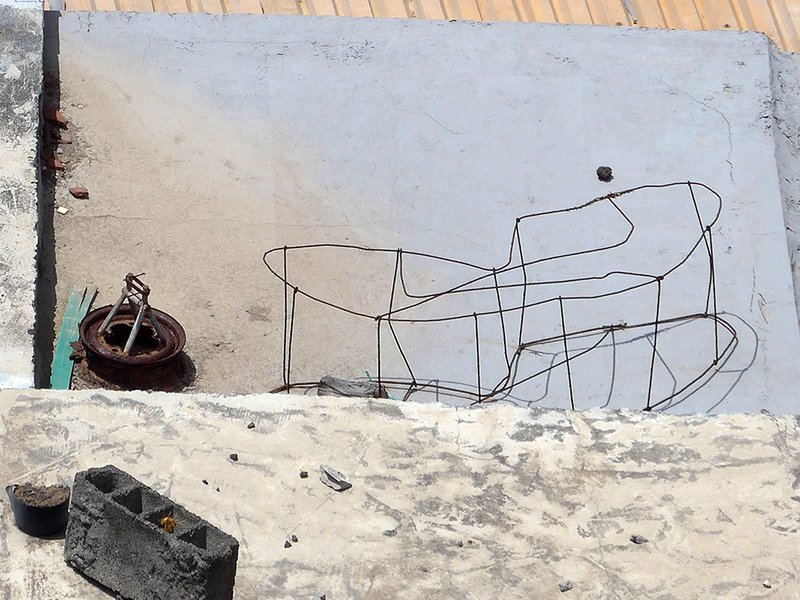Abstracts

Burcu Dogramaci
"Border in/as exile. Expectations, experiences and artistic negotiations"
Cross-border exile and flight profoundly change the disposition of the subject. Familiar spaces must be abandoned, relationships dissolved. Language and cultural spaces change, and the exiled are confronted with the uncertainty of their residence status. Border crossings are therefore, dominant experiences in the context of exile. They mean physical movement across national borders, but also being at or on the border as an existential, liminal state. In artistic works, border experience, border crossing, limitation and delimitation are reflected in a variety of ways.
The lecture will examine how the exile-related threshold state is negotiated and how boundaries and their overcoming affect artistic work. Artistic practices on the border will be discussed in two categories, which, however, are not to be understood as binary constellations: “Waiting" at the border can be understood as a situation in transition, a staying-walking that can turn into activity in the event of a situation-related change. The "crossing" of borders, on the other hand, requires a special skill especially from refugees without visas and freedom to travel: detours, interruptions and camouflage are common practices in dealing with borders in the context of flight and exile.
The lecture will approach the waiting and crossing of borders from the perspective of the arts, focusing on historical exile and contemporary flight and migration: how did the prisoners of the French internment camp Gurs around 1940 reflect their status in drawings; how is the status in waiting reflected? What possibilities do artist Francis Alÿs’s works offer for overcoming borders at different global border lines? The lecture thus examines how borders become a challenge for artistic and performative practices and - vice versa - how artists react to the limitations of borders.
Elizabeth Otto
"Bauhaus Women: Transforming Art and Design under Fascism."
Founded a century ago, the Bauhaus (1919–1933) is remembered for its sleek modernist architecture and design and as the twentieth century’s most influential school of art; it is also associated primarily with a handful of famous men, including Walter Gropius, Paul Klee, Wassily Kandinsky, and László Moholy-Nagy. In fact, women made up over one third of the school’s 1,250 members. As Elizabeth Otto explores in this talk, these female Bauhaus artists, designers, and photographers—women like Ré Soupault, Friedl Dicker, and Ilse Fehling—transformed their Bauhaus aesthetics of the 1920s in response to the rise of fascism in the 1930s and ’40s. Some Bauhaus women used art and design as forms of resistance and techniques of resilience; others adapted and even conformed under the Nazi regime. Otto argues not only for a more inclusive definition of the Bauhaus, but also for a nuanced understanding of this movement that was transported to many new contexts—geographical and political.
Bertrand Westphal
"Dr. Möbius, or: How I Learned to Stop Worrying and Love Strips and Boundaries."
According to Eduardo Galeano, who was a Uruguayan expert in what both democracy and soccer truly mean, there is a very singular cancha, i.e. a soccer field in Latin American Spanish, somewhere in a small town of Brazil. In this place, teams are playing simultaneously on both sides of the Equator. During the first half of the game, they are located in the Southern Hemisphere, and during the second half, they move to the Northern Hemisphere, whereas their rivals do it the other way around. Over the game, nobody prevents them from crossing from one part of the Equator to the other. They play global without caring about boundaries. The ball is round, and so is the world, or so is it said to be.
Did Dr. Möbius watch a game there? Probably not, as he died a few years before soccer started invading Scotland, England, and the globe.
Without any doubt, Giorgio Agamben enjoys soccer, and strips. He is also much more serious than I am. In several of his essays, he deals with topological structures that underline the indeterminacy of all kinds of boundaries. Among them, some pop up between private and public areas, and other, tragically, between the state of nature and the state of exception, and still others between geographical entities like Europe, and the Global South, center, and periphery, and so on. To illustrate the fact that "exterior and interior in-determine each other" (Means Without End: Notes of Politics, 2000), Agamben mentions a series of figures like the Möbius strip, the Leyden jar or the Klein bottle. All these topological projections emphasize indeterminacy and relativity. That is precisely what I tried to show in La Cage des méridiens (2016) and Atlas des égarements (2019), my two latest books.
There is a lot to say about the Möbius strip metaphor, and it appears to be quite stimulating, in a geocritical perspective, to approximate it to other indeterminate, or deterritorialized boundary frameworks, like third space, for instance, or reversed maps.
All this set of speculations may be fueled by literary and artistic examples.
